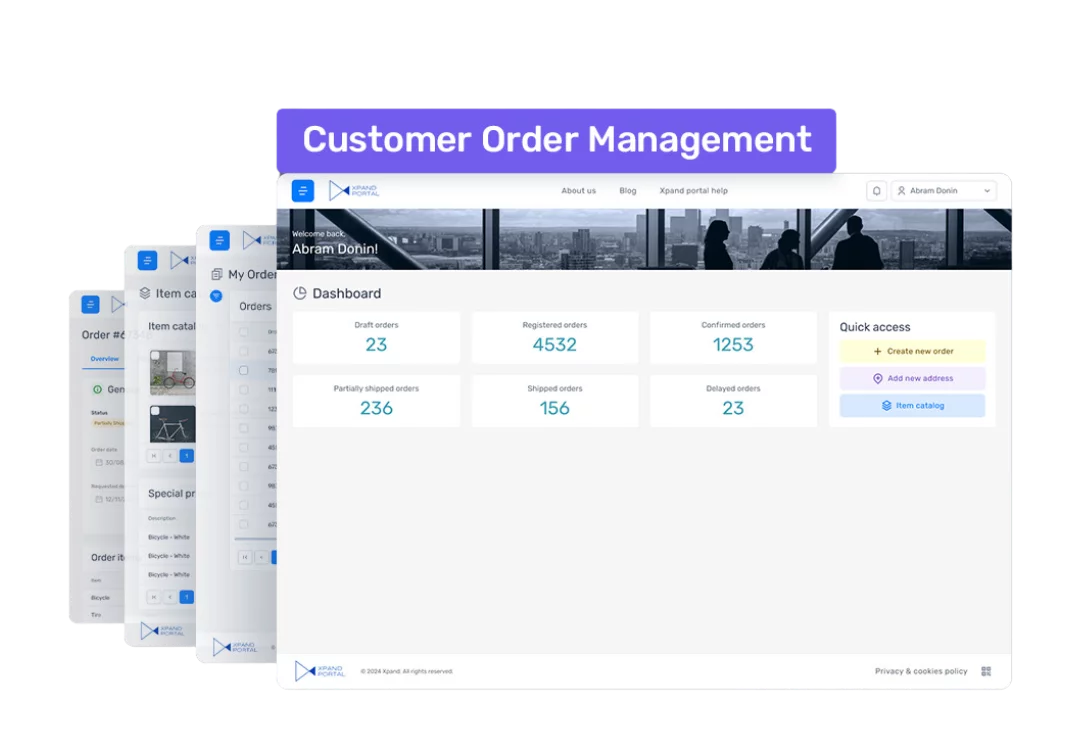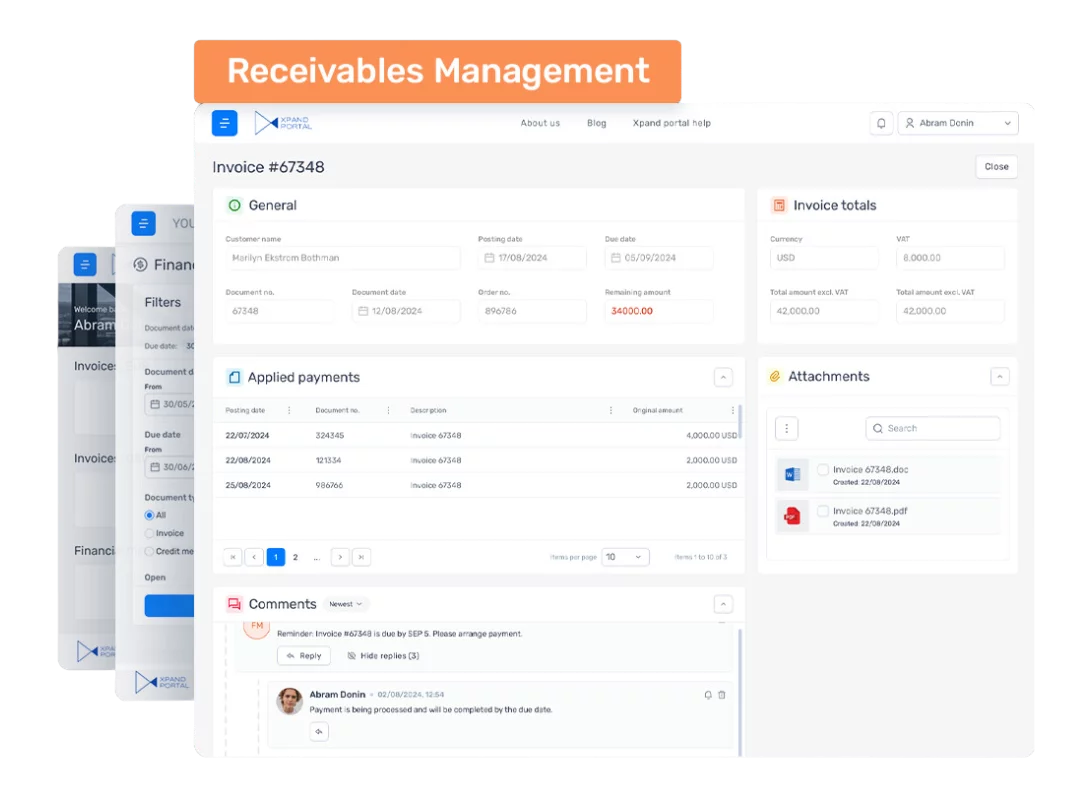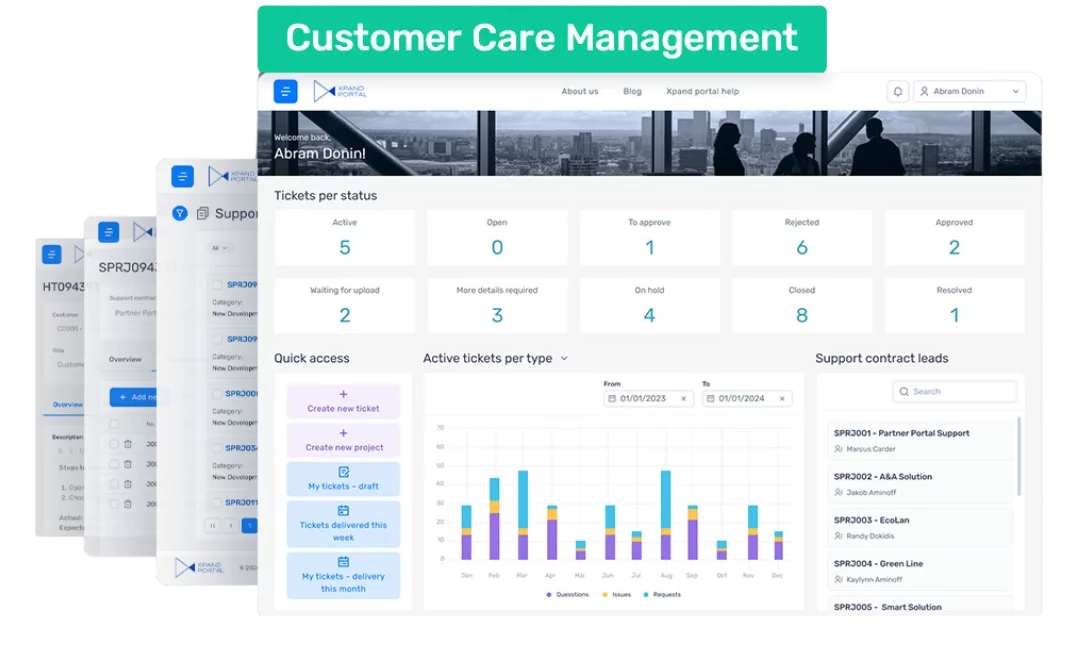One Step Closer to Your Customer: The Story Behind Creating Xpand Portal Modules
Anzhela Pozdniakova, Business Architect of Xpand:
If you know even a little about Xpand, you’ve probably heard about our Xpand Portal product and our expertise around Microsoft applications for business. A focus on business operations has greatly shaped our typical projects and the problems we solve. We have been implementing business solutions based on Microsoft Dynamics 365 Business Central and the surrounding Microsoft ecosystem applications for more than a decade now. Eight years ago, we realized that no matter how advanced internal business applications are, businesses are still challenged with organizing information and communication beyond the walls of their infrastructure. This is why Xpand Portal was “born”.
We always were and still are inspired by the low-code philosophy, which we have woven into Xpand Portal, making it a rich clay that can be formed into many shapes. However, after eight years of the portal implementations, we noticed the common challenges that our customers were seeking to solve with Xpand Portal, as well as challenges of our own.
You are welcome to familiarize yourselves with one more article by Anzhela Pozdniakova: Why low-code is a trend in the world of business applications. Let us know what you think of it!
Knowledge of the common challenges and having solutions to them took us one step further in our considerations. We set ourselves a goal to help our customers benefit from improved efficiency of their operations with less investment of time and resources, by generalizing and packing these solutions.
This is why we designed reusable, off-the-shelf modules that instantly offer a fully functioning solution, based on the Xpand Portal platform with all its fantastic core features. These can be installed as stand-alone solutions, together, or in addition to existing custom business functionality on the Xpand Portal. Let’s see what these modules are!
Customer Order Management
It is hard to imagine ordering groceries or clothes over the phone or email, but in the B2B world, it is still often the case. Such communication is a time-eater for both sides, as well as an opportunity for human mistakes. On one side, the Customer Order Management module is all about letting B2B customers see available for buying stock levels, see their prices and bundle price discounts, create orders, and then simply track their progress. On the other side, vendors can concentrate on the necessary operational activities to fulfill the automatically created sales orders in Business Central. Can you imagine how much simpler the order intake can be? Of course, the complexity of the “order” concept can vary depending on the industry, but this is where the flexibility of the Xpand Portal platform proves useful for custom tweaks and adjustments.
Receivables Management

No business can survive without generating revenue and being able to forecast cash flow. Gaps in the inbound cash flow can lead business to big trouble, even if the revenues seem fine. This is why bookkeeping departments have the critical routine task of making sure they issue and communicate invoices to their customers on time. Another important routine task is reminding customers to pay for invoices when the due date comes. Customers need to be reminded not necessarily because they are unreliable, it could be just the case that the email with that invoice has gotten unnoticed, lost in junk, or forgotten.
In the European Union, the roadmap of the transition to an electronic way of invoice exchange was set as long as 10 years ago. Many EU countries have already implemented mandatory e-invoicing, and those who have not yet are planning to do this in coming years. Business Central has had functionality for integration with e-invoicing providers for some time as well. The future looks promising for the bookkeeping departments, right? So why would a company still need to share invoices the alternative way, you may ask?
First of all, the future is in the future, while the problem is here and now. Moreover, countries outside the European Union may take longer to implement mandatory e-invoicing, as smaller businesses may not be as swiftly ready for the technological investments needed to switch to e-invoicing. In addition, it will take time for a global framework to be adopted. Thus, while e-invoicing is a great breakthrough in invoice exchange and transparency, I believe we are on a journey and not at the destination point.
Even if a vendor has implemented top-notch advancements, if their customers have not, the communication goes back to emails. This is why having a central place where vendors can reconcile with their customers on invoicing history, and payment statuses makes so much sense, and this is exactly the purpose of the Receivables Management module...and let the portal take care of those reminders instead of your bookkeeping department.
Customer Care Management

As a company that offers services ranging from upgrades to add-on development, we faced the challenge of keeping our customers well-informed about the current project status and providing them with an instrument for reporting issues that they may find during UAT (User acceptance testing). It may seem like a shared Microsoft Excel can work well to share the project timeline and collaborate on a list of open issues. It might also seem that a shared Microsoft Teams channel or email, where people can drop issues, questions, and requests, could be used for this purpose as well. While Excel and Teams are great tools in general, for long-running projects with many involved profiles, the communication that is based solely on these tools becomes chaos and simply does not work, especially if you want to measure the quality of the support afterwards.
This is why we used the Xpand Portal to configure a central hub where we could collaborate with our customers, organize and structure information, manage and track project statuses, automate the support ticketing process and notifications, as well as easily measure project KPIs. After using and refining this functionality for many years now, we decided to package it into the Customer Care Management module and let other partners benefit from the enhanced customer support and reduced support management costs. Moreover, this module can be connected to Projects in Business Central as a starting point; however, it offers comprehensive additional functionality on its own. We strongly believe that many partners share the challenges when organizing communication with their customers as we did, but we know there’s already a solution for this challenge.
Conclusion
I believe that with these modules, Xpand has made a significant contribution to the global trend of democratizing technological advancements. By reducing the time and budget needed to implement a portal, we bring companies closer to their customers and give them the ability to shift their resources from routine tasks to creative opportunities. So why not take a closer look at the details?
We kindly invite you to watch our video about Xpand Portal and its modules – link.
Structured information about each module, along with their benefits and pricing – link.

